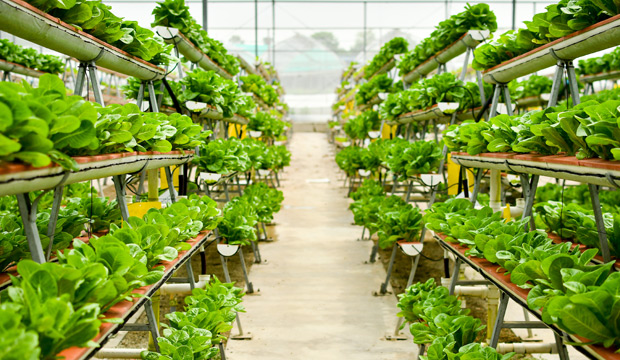Thank you to member Duncan Allison for this monthly contribution.
Vertical agriculture – I have been somewhat skeptical that it would be possible for vertical agriculture to be widely adopted and economically feasible with all the necessary equipment and expensive city space to be able to compete with conventional production. However, an Israeli company has come up with a portable farm within a recycled shipping container that could be positioned anywhere – outside a restaurant, parking lot or on the roof of a hotel. It has been shown that 200 crops could be grown using 90% less water and electricity than other vertical farming solutions. It is based on geoponic and not hydroponic principles and is pesticide-free. Produce would be fresher with consequently longer shelf life since shorter, or zero, transportation is involved. The product has been named VboX(9). Perhaps there is the potential for this urban agriculture product to enable the vertical agriculture market to reach the forecast of $13 billion by 2024.
Amazing efficiency in the dairy industry – Some recent information in the Journal of Animal Science has shown what incredible advances have been achieved in this major livestock segment. Between 1944 and 2009 the environmental footprint of the U.S. dairy industry has changed dramatically – 90% less land, 65% less water was required and the milk was produced with a 63% smaller carbon footprint to produce a gallon of milk over those 65 years. The data was updated to cover 2007 to 2017. During this period milk production increased by 24 .9% but the total greenhouse gas (GHG) emissions increased by only 1%. Less feed (-17.8%), land (-20.8%), water (-30.5%) were required and a reduction in GHG emission of 19.2% per unit of milk. Less manure was produced, and less nitrogen and phosphorus excreted. However, the argument over the health value of milk still continues. “There aren’t many other single foods that come close to the nutrients you get from one cup of milk.” “It is a nutrient-packed food including calcium, potassium and vitamin D.” Yet a quick search on the internet can find plenty of contrary arguments and there are over ten imitation “milks” including soy milk and almond milk. However a report published in September representing four of the biggest health organizations recommended cutting down on sugary sodas and juices and favoring breast milk and cow’s milk over plant beverages. Perhaps most concerning are the many unheaTlthy aspects of cow’s milk that are being promoted by alternative sources and some health experts. We should recognize that our dairy farmers have been able to achieve wonders by increasing milk production much more efficiently with less impact on the environment and with major attention to the well-being of the cows. Surely, milk will continue to be an important component of our diet in cheese, ice cream, yogurt and fluid milk.
Climate change has certainly received much more attention around the world recently and we are being constantly reminded of the impacts – massive reductions in arctic ice, rising sea levels, larger storms and steady increases in temperature. While we are impacted in various ways, farmers in particular are suffering the most. Extreme weather causes 90% of the crop losses in the U.S.
We need to make sure that our politicians are pushing for sufficient funding of research, development and extension so that appropriate crops and varieties are developed and suitable cultural and land management practices are allowed. This requires clear acceptance of climate change. Many developing countries are likely to be even more seriously affected by climate change. Our government should continue to support appropriate programs in developing countries that enable their populations to manage these changes. The alternative will be further massive increases in large numbers emigrating and seeking a new life in other countries. Think of Africa! I worked in a country that had 4 million people when I was there in the 60’s, had reached 16 million in 2013 when my wife and I went back for a visit and is projected to reach over 40 million by 2050.
There are over 50,000 jobs open in agriculture each year in the United States, but not enough qualified graduates to fill them. These are not only jobs in the field but in the office and in the many organizations that supply and support farmers – animal nutrition, fertilizers, crop protection products, farm equipment, consulting, marketing etc. Our farming is indeed heavily dependent on having highly efficient and progressive input suppliers. No need to say that agriculture today is highly complex and technical that requires an excellent support system for both large and small producers. Maintaining the public’s firm trust in our food supply has never been so critical.

